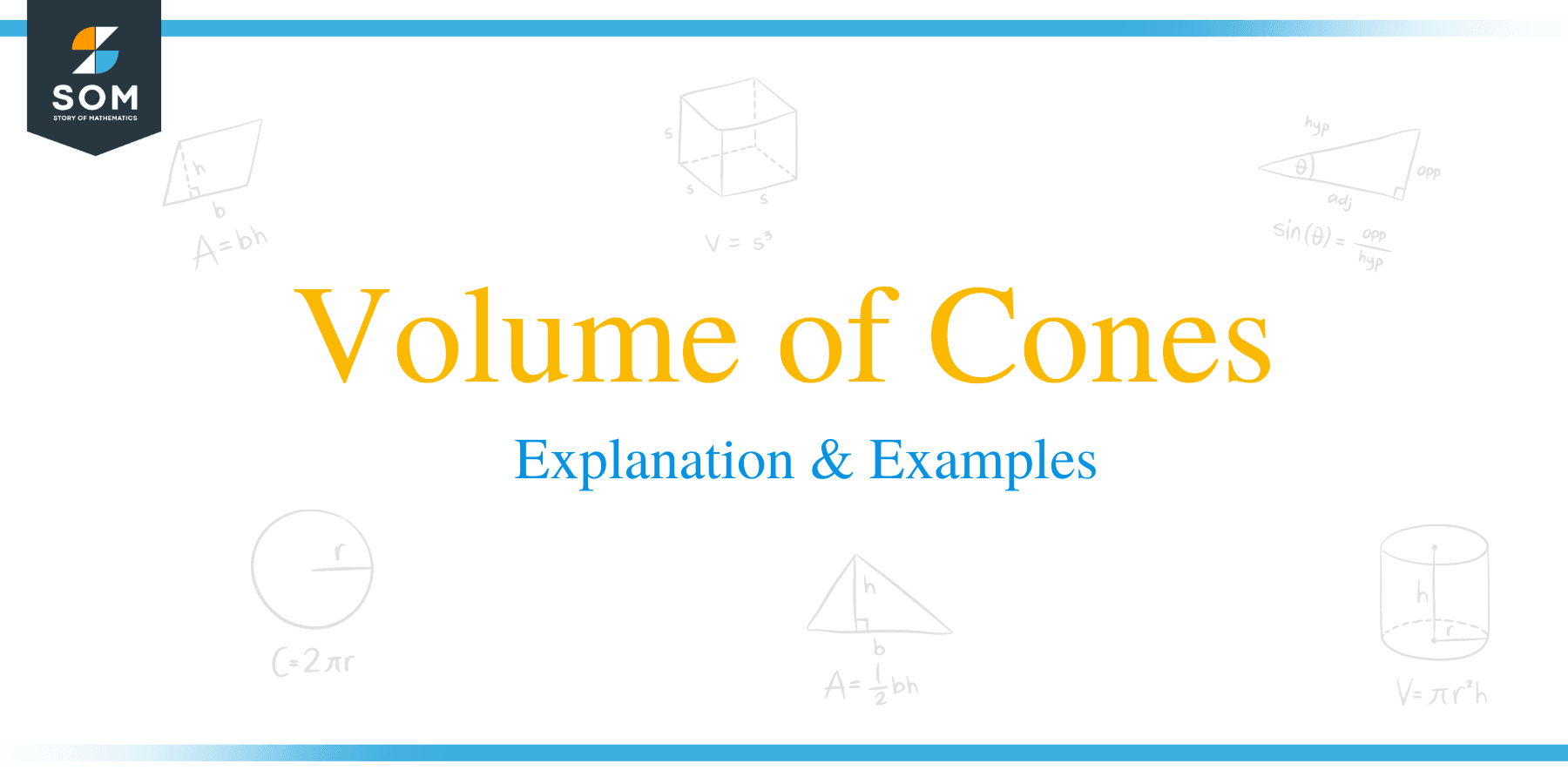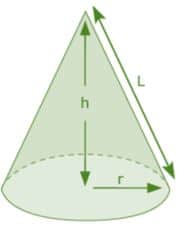- Home
- >
- Volume of Cones – Explanation & Examples
Volume of Cones – Explanation & Examples
 In geometry, a cone is a 3-dimensional shape with a circular base and a curved surface that tapers from the base to the apex or vertex at the top. In simple words, a cone is a pyramid with a circular base.
In geometry, a cone is a 3-dimensional shape with a circular base and a curved surface that tapers from the base to the apex or vertex at the top. In simple words, a cone is a pyramid with a circular base.
Common examples of cones are ice-cream cones, traffic cones, funnels, tipi, castle turrets, temple tops, pencil tips, megaphones, Christmas trees, etc.
In this article, we will discuss how to use the volume of a cone formula to calculate the volume of a cone.
How to Find the Volume of a Cone?

In a cone, the perpendicular length between the vertex of a cone and the center of the circular base is known as the height (h) of a cone. A cone’s slanted lines are the length (L) of a cone along the taper curved surface. All of these parameters are mentioned in the figure above.
To find the volume of a cone, you need the following parameters:
- Radius (r) of the circular base,
- The height or the slanted height of a cone.
Like all other volumes, the volume of a cone is also expressed in cubic units.
Volume of a cone formula
The volume of a cone is equal to one-third of the base area’s product and the height. The formula for the volume is represented as:
Volume of a cone = ⅓ x πr2 x h
V = ⅓ πr2 h
Where V is the volume, r is the radius and h, is the height.
The slant height, radius, and height of a cone are related as;
Slant height of a cone, L = √(r2+h2) ………. (Pythagorean theorem)
Let’s gain an insight into the volume of a cone formula by working out a few example problems.
Example 1
Find the volume of the cone of radius, 5 cm, and height, 10 cm.
Solution
By the volume of a cone formula, we have,
⇒V = ⅓ πr2h
⇒V = ⅓ x 3.14 x 5 x 5 x 10
= 262 cm3
Example 2
The radius and slant height of a cone are 12 mm and 25 mm. respectively. Find the volume of the cone.
Solution
Given:
Slant height, L= 25 mm
radius, r = 12 mm
L = √ (r2 + h2)
By substitution, we get,
⇒25 = √ (122 + h2)
⇒25 = √ (144 + h2)
Square both sides
⇒625 = 144 + h2
Subtract by 144 on both sides.
481 = h2
√481 = h
h = 21.9
Hence, the height of the cone is 21.9 mm.
Now, calculate the volume.
Volume = ⅓ πr2h
= ⅓ x 3.14 x 12 x 12 x 21.9
= 3300.8 mm3.
Example 3
A conical silo of radius 9 feet and height 14 feet releases cereals at its bottom at a constant rate of 20 cubic feet per minute. How long will it take for the silo to be empty?
Solution
First, find the volume of the conical silo
Volume = ⅓ x 3.14 x 9 x 9 x 14
= 1186.92 cubic feet.
To get the time take for the silo to be empty, divide the volume of the silo by the flow rate of the cereals.
= 1186.92 cubic feet/20 cubic feet per minute
= 59 minutes
Example 4
A conical storage tank has a diameter of 5 m and a height of 10 m. Find the capacity of the tank in liters.
Solution
Given, diameter = 5 m ⇒ radius = 2.5 m
Height = 10 m
Volume of a cone = ⅓ πr2h
= ⅓ x 3.14 x 2.5 x 2.5 x 10
= 65.4 m3
Since, 1000 liters = 1 m3, then
65.4 m3 = 65.4 x 1000 liters
= 65400 liters.
Example 5
A solid plastic sphere of radius 14 cm is melted down into a cone of height, 10 cm. What will be the radius of the cone?
Solution
Volume of the sphere = 4/3 πr3
= 4/3 x 3.14 x 14 x 14 x 14
= 11488.2 cm3
The cone will also have the same volume of 11488.2 cm3
Therefore,
⅓ πr2h = 11488.2 cm3
⅓ x 3.14 x r2 x 10 = 11488.2 cm3
10.5r2 = 11488.2 cm3
r2 = 1094
r = √1094
r = 33
Therefore, the radius of the cone will be 33 cm.
Example 6
Find the volume of the cone, whose radius is 6 feet and height is 15 feet
Solution
Volume of a cone = 1/3 x 3.14 x 6 x 6 x 15
= 565.2 ft3.
